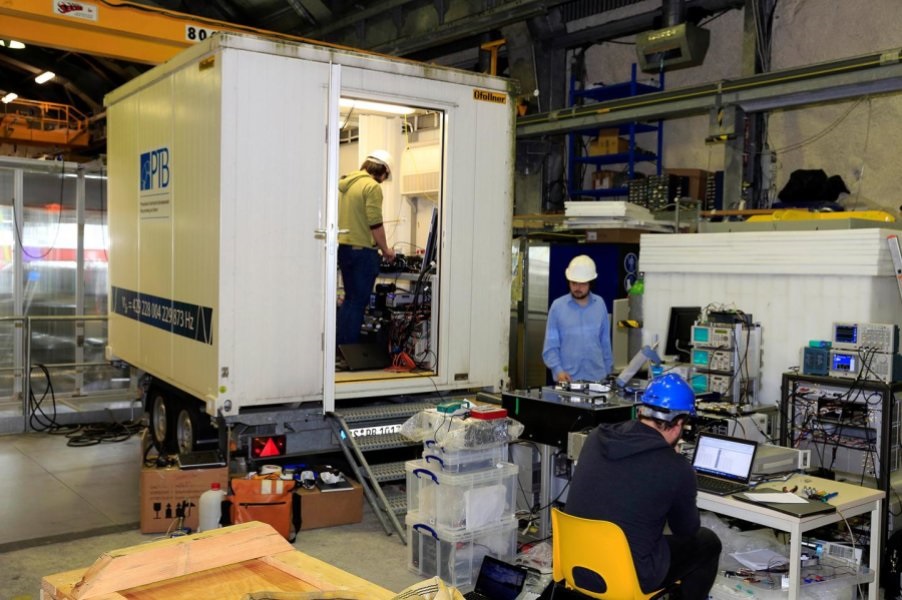
The transportable strontium optical lattice clock in the Modane Underground Laboratory. Image credit: Lisdat/PTB
A European collaboration involving clock experts from the National Physical Laboratory (NPL), the Physikalisch-Technische Bundesanstalt (PTB) and the Istituto Nazionale di Ricerca Metrologica (INRIM) has used one of the world’s transportable optical atomic clocks to measure gravitation for the first time. The results of the experiment were published in Nature Physics.
Until now, such delicate clocks have been restricted to laboratories at a few major research institutions, however, researchers at PTB have developed a transportable strontium optical lattice clock, opening up the possibility of performing measurements in the field. The transportable clock was driven in a vibration-damped and temperature-stabilised trailer to the French Modane Underground Laboratory (LSM). Operated by Centre National de la Recherche Scientifique and Grenoble-Alpes University, the multidisciplinary lab is located in the middle of the Fréjus road tunnel between France and Italy.
There, the team measured the gravity potential difference between the exact location of the clock inside the mountain and a second clock at INRIM — located 90 km away in Torino, Italy, at a height difference of about 1,000 m.
The accurate comparison of the two clocks was made possible using a 150 km long optical fibre link, set up by INRIM, and a frequency comb from NPL, to connect the clock to the link. Researchers from Leibniz Universität Hannover also determined the gravity potential difference using conventional geodetic techniques, and the two measurements were shown to be consistent.
With improvements to the accuracy of the transportable optical clock, this technique has the potential to resolve height differences as small as 1 cm across the Earth’s surface. The advantage of using optical clocks is that they can make measurements at specific points, in contrast to satellite-based measurements, such as GRACE and GOCE, which average the gravity potential over length scales of about 100 km.
This novel method could lead to higher resolution measurements of the Earth’s gravity potential, allowing scientists to monitor, with unprecedented accuracy, continental height changes related to sea levels and the dynamics of ocean currents. It will also lead to more consistent national height systems.
Currently, different countries measure the Earth’s surface in the same way, but relative to different reference levels. This has led to problems — one such being the Hochrhein Bridge between Germany and Switzerland, where construction on each side used different sea level calculations, leading to a 54 cm discrepancy between the two sides.
Achieving consistency between national height systems will help to prevent costly mistakes from happening in engineering and construction projects. Improved measurements of gravity potential may also help to improve our understanding of geodynamic effects associated with mass changes under the Earth’s surface.
This type of measurement of height will also help us to monitor changing sea levels in real-time, allowing us to track seasonal and long-term trends in ice sheet masses and overall ocean mass changes. Such data provides critical input into models used to study and forecast the effects of climate change.
Helen Margolis, Fellow in Optical Frequency Standards and Metrology at NPL, said:”Our proof-of-principle experiment demonstrates that optical clocks could provide a way to eliminate discrepancies and harmonise measurements made across national borders. One day such technology could help to monitor sea level changes resulting from climate change.”
Christian Lisdat, Leader of the group ‘Optical Lattice Clocks’ at PTB, said: “Optical clocks are deemed to be the next generation atomic clocks — operating not only in laboratories but also as mobile precision instruments “This cooperation proves again how disciplines such as physics or metrology, geodesy and climate impact research can mutually benefit each other.”
Filed Under: Infrastructure




